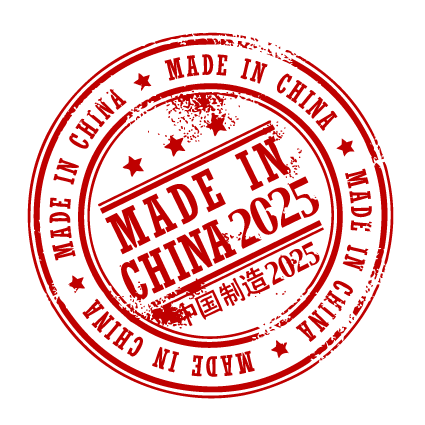 The Chinese Government understands that in order to ensure continued economic growth and raise living standards its economy must ascend the value chain, so it came as no surprise when the State Council announced the Made in China 2025 initiative (2025 initiative) during the first half of 2015. The plan, which is the first step in a larger three-stage project that is set to run until 2049, aims to expand the manufacturing sector’s capacity to innovate, fully integrate IT into industrial processes, build quality brands and strengthen links with the international advanced manufacturing industry. It identifies ten priority industries—many being sectors where European companies currently enjoy competitive advantages in the Chinese market—that are central to this initiative.
The Chinese Government understands that in order to ensure continued economic growth and raise living standards its economy must ascend the value chain, so it came as no surprise when the State Council announced the Made in China 2025 initiative (2025 initiative) during the first half of 2015. The plan, which is the first step in a larger three-stage project that is set to run until 2049, aims to expand the manufacturing sector’s capacity to innovate, fully integrate IT into industrial processes, build quality brands and strengthen links with the international advanced manufacturing industry. It identifies ten priority industries—many being sectors where European companies currently enjoy competitive advantages in the Chinese market—that are central to this initiative.
This is not the first time that the Chinese Government has attempted to use industrial policy to foster innovation. It attempted something similar in 2010, in seven strategic emerging industries, four of which have been included in the 2025 initiative: information technology, biotechnology, new materials and new-energy vehicles. Many European companies in the wind and solar energy industries, which were also part of the 2010 initiative, agreed to transfer technology to Chinese partners, and future competitors, as the price they had to pay to enter the market. However, few of them have ultimately prospered under the Chinese Government’s policy framework. Many have since vanished altogether.
Yet there is no doubt that government industrial policies have played an important role in developing a range of economic sectors in Europe and other advanced industrial economies. In fact, Europe’s position as a global leader in numerous industries is partially a result of policy priorities that were set by European governments.
Regardless, useful apples-to-apples comparisons cannot be made between the intentions and likely outcomes of European and Chinese industrial policies. In fact, concerns about overcapacity and overinvestment were already raised with reference to the development of the strategic emerging industries China identified.
The European business community therefore wonders whether the 2025 initiative will be powered by market-based innovation or state-driven control. As the plan sets specific sales-growth and market-share targets for “domestic production” that fit poorly with the liberalisation of China’s investment regime, there is certainly cause for concern. Can the 2025 initiative be improved through the potential bilateral investment agreement that the EU and China are negotiating, or will it include more pressure for technology transfers? As it also includes goals for international market share, can EU businesses now determine whether or not they will still be in the game in a decade? These questions cannot be fully answered at this time.
The special report included in this issue of EURObiz on the Chamber’s major study on overcapacity in China’s industrial economy is therefore directly relevant to the 2025 initiative. The study examines how industries in which the Chinese state has played an active role, such as steel, aluminium and shipbuilding, have misallocated enormous amounts of land, labour and capital toward the production of goods for which there is no market-driven demand.
Factors such as easy access to capital and weak implementation of regulations, coupled with a lack of reliable data on market trends that are necessary for informed decision making, have ensured that there is no market mechanism to force state-owned enterprises (SOEs) and state-affiliated companies to cease production. The fierce competition on price that has resulted from the mismatch between supply and demand also leaves many companies in afflicted sectors lacking the funds for the R&D programmes necessary for moving into more profitable product segments. As a result, they remain stuck in repetitive cycles of low tech production of undifferentiated products. Recently in the solar industry, and currently in steel, this has disrupted global markets.
The central government has issued a seemingly endless series of directives calling for inefficient, polluting and low tech companies to be shut down. However, to date, the iron triangle of local governments, local state-owned banks and local SOEs has prevented fundamental reforms from taking place. As their primary interest is to defend their tax base, maintain social stability at the local level and defend their market share, from their perspective this is perfectly rational. We just do not see these dynamics in industries where private enterprises are dominant and the government acts as regulator instead of market participant.
Does the 2025 initiative present exciting near-term opportunities for European companies that can provide relevant technologies and services that China currently lacks? Absolutely. Is it possible that the initiative is promoting additional industries in which overcapacity may emerge as a problem? Entirely. Will the European Chamber continue to closely monitor related developments of importance to our members’ business interests? Undoubtedly.
Jörg Wuttke
President
European Chamber of Commerce in China



Recent Comments